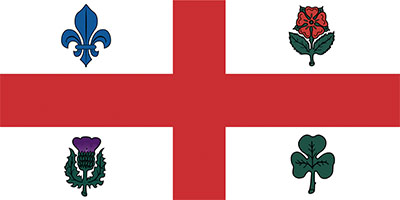Quebec
Origin of the Name
The name "Quebec" comes from the Algonquin word for "narrow passage" or "strait" and was first used to describe the narrowing of the St. Lawrence River near what is now Québec City. Quebec has had several names throughout its history: Canada, New France, Lower Canada and Canada East.
History
The Aboriginal peoples who inhabited present day Quebec before Europeans arrived were mostly members of the Algonquian and Iroquoian linguistic groups, who greatly influenced the early history of the Province. The Inuit inhabited Northern Quebec, as they continue to do today.
Quebec was one of the first areas of Canada to be explored and settled by Europeans.
Jacques Cartier landed at Gaspé in 1534 and claimed the land that would be known as Canada for the King of France. In 1608, Samuel de Champlain founded Québec City. A few years later, Paul Chomedey de Maisonneuve founded Ville-Marie (1642), which would become Montréal in the late 18th century.
The Battle of the Plains of Abraham in 1759 marked the defeat of the French troops at the hands of the British army. With the signing the Treaty of Paris in 1763, the French King ceded New France to the British Crown. This led to a large wave of immigration of English, Irish and Scottish settlers. The Quebec Act of 1774 allowed the free practice of the Catholic faith, the use of the French language and the establishment of French civil law in Quebec. The Constitutional Act of 1791 created two provinces: Upper Canada (Ontario), which was mostly Anglophone, and Lower Canada (Quebec), with a Francophone majority. The Constitution Act of 1867 united Canada's provinces of Ontario, Quebec, Nova Scotia, and New Brunswick into a federation.
The Province of Quebec was redefined in 1898 when its northern boundaries were recognized following a judicial decision rendered in 1884. Quebec's territory was then extended in 1912 to include the District of Ungava, formerly part of the Northwest Territories. In 1927, the Judicial Committee of the British Privy Council was asked to decide a boundary dispute between Canada and Newfoundland over the exact border between Labrador and Quebec.
Quebec is the largest province in Canada. It is three times the size of France and seven times larger than Great Britain. A million lakes and rivers dot the landscape, and one of the longest navigable waterways in the world, the St. Lawrence River, stretches over 1200 km of the province's territory. Quebec extends over several vegetation zones: the boreal forest to the south, the taiga in the central area and the tundra in the more northern regions.





